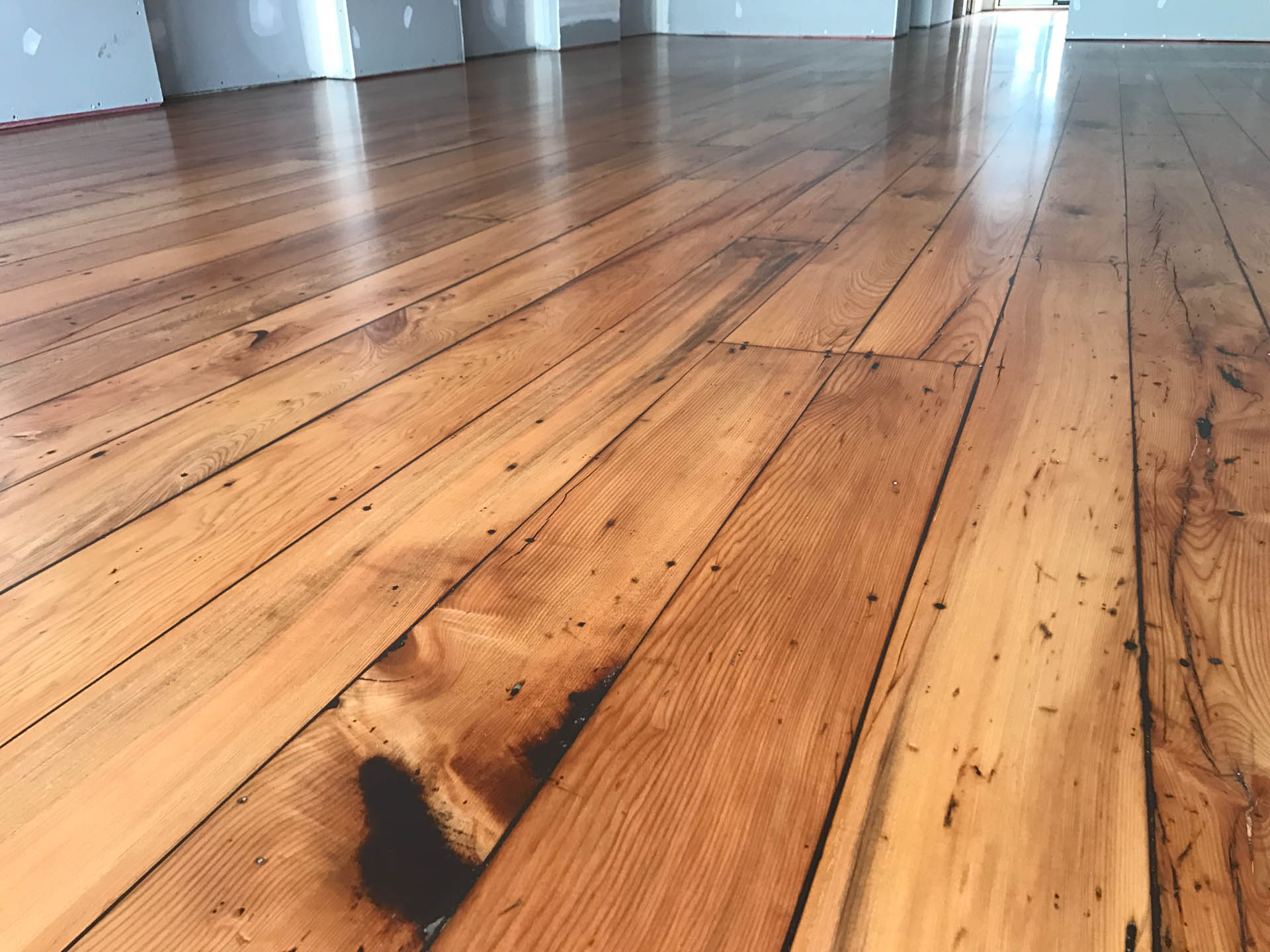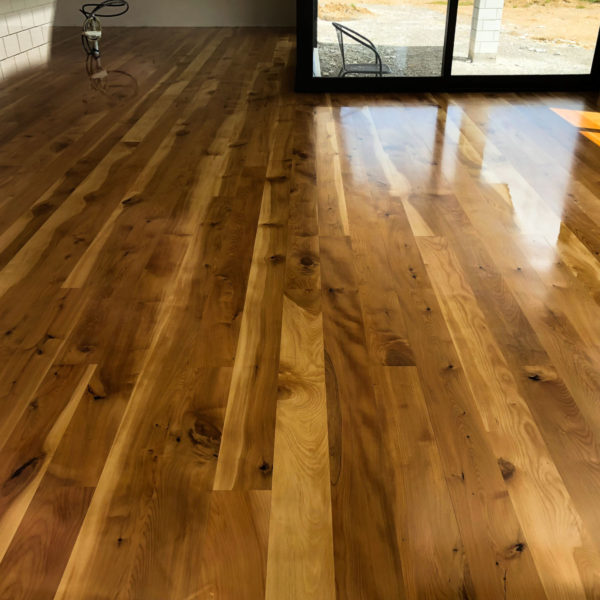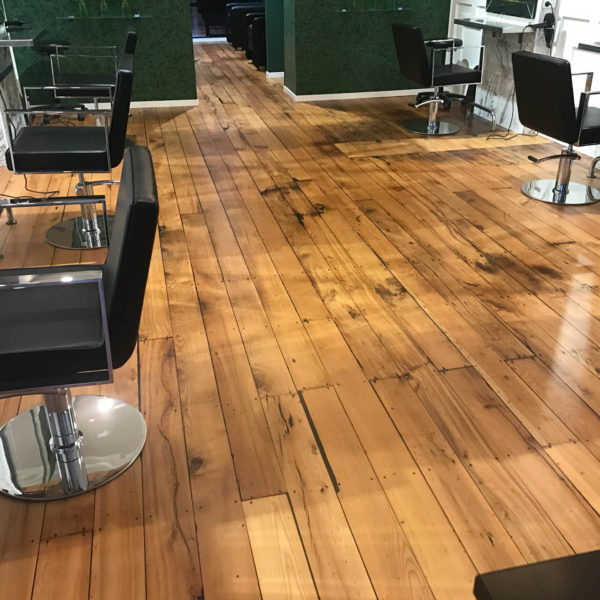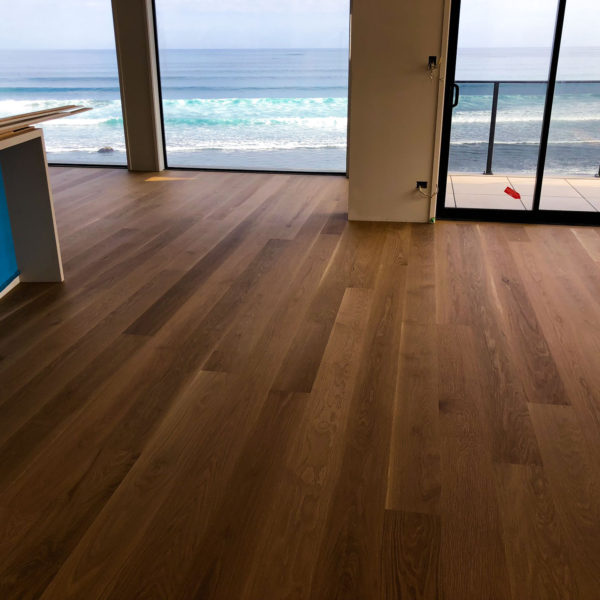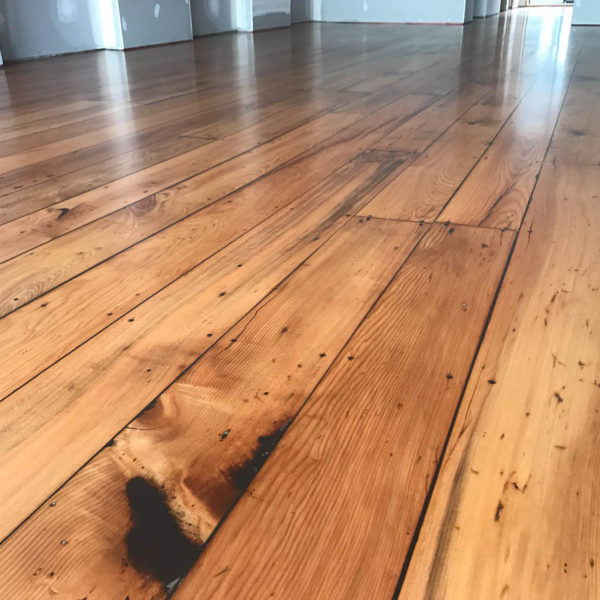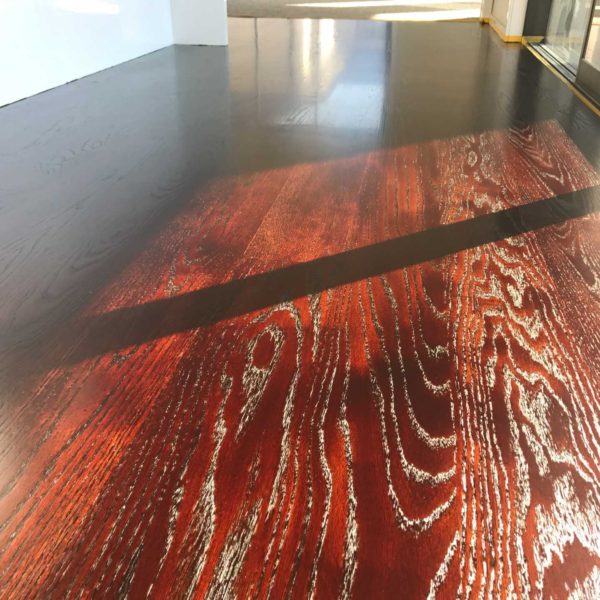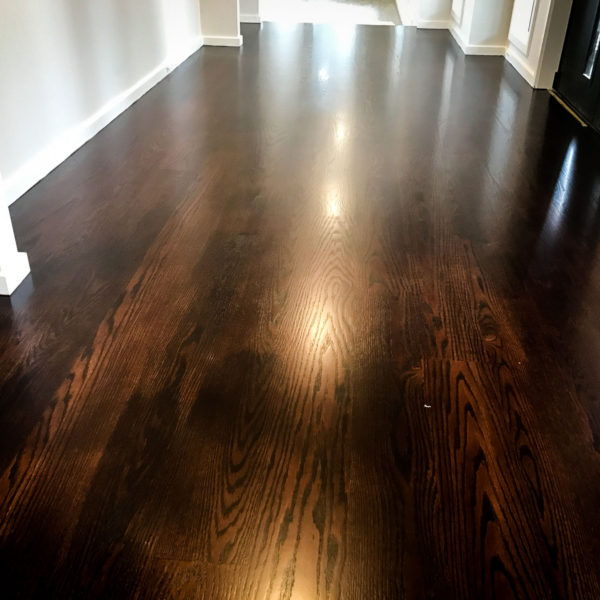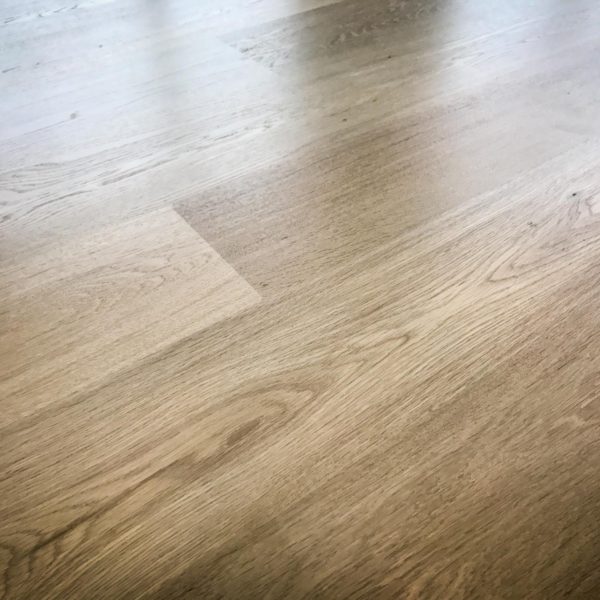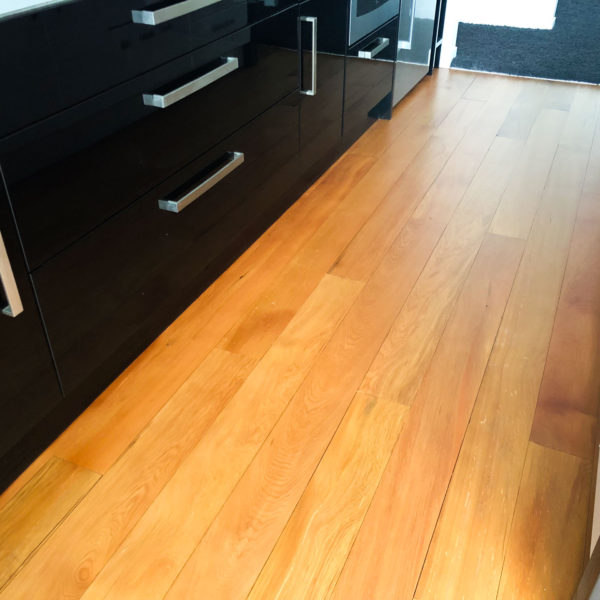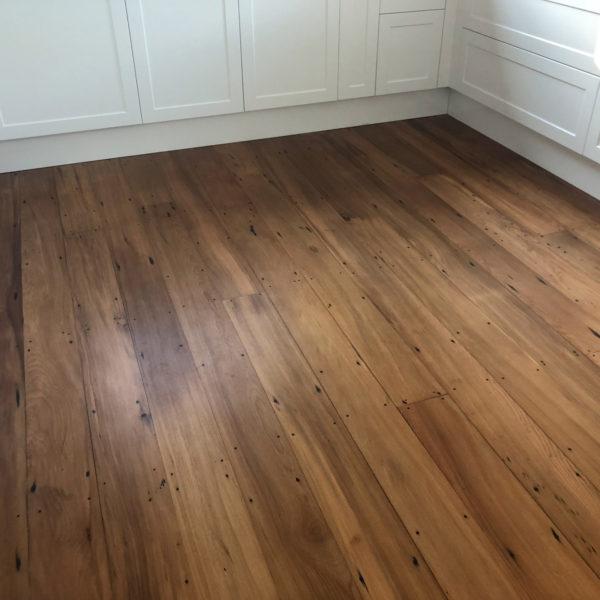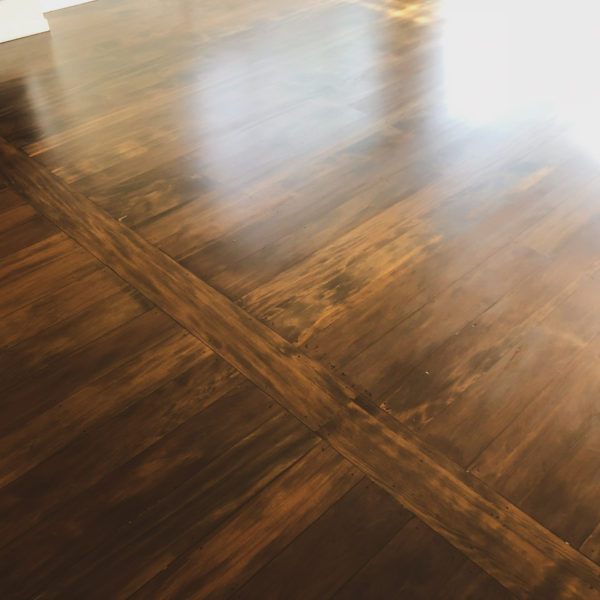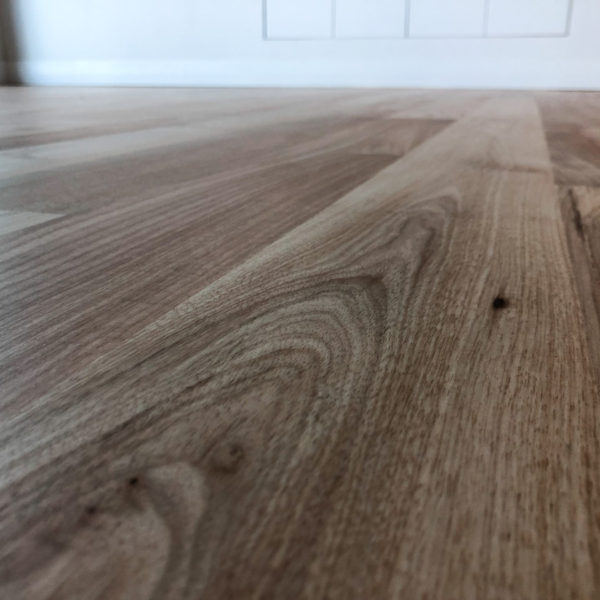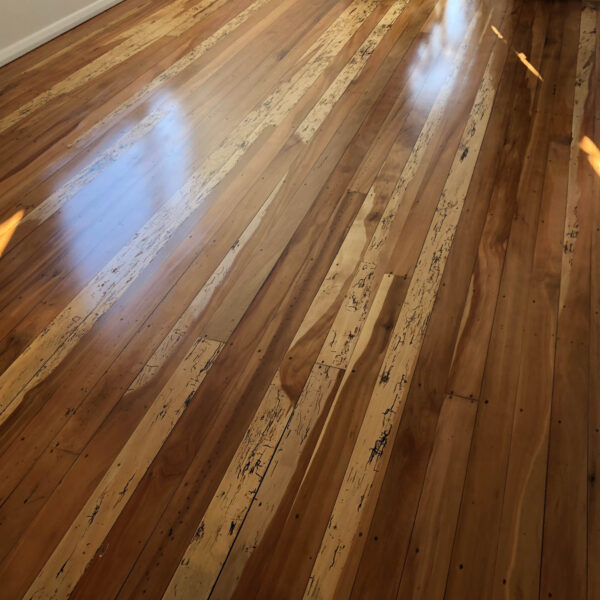Floorcoat has years of industry experience when it comes to timber flooring. Our services include timber floor sanding, floor preparation, application of protective coatings, and ongoing upkeep and maintenance.
Timber Floor Sanding
Timber floor sanding is done with specialised sanding machines. The floor is then finished with the desired protective coating; oil or polyurethane etc.
What is Timber Floor Sanding?
Wooden floors are sanded down with a large belt or drum sanding equipment. The majority of the material is removed by these sanders. The areas where the large sanders cannot reach, such as edges, corners, and stairs, are sanded by an edger/hand tool. A finishing machine is then used for the final floor sanding.
First stage of floor sanding is the preparation
Preparation is the first stage of the floor sanding process. All nails which protrude above the boards are punched down. Nails can severely damage the sanding machines which are being used. Staples or tacks used to fasten previous coverings (if any) have to be removed to reduce the possibility of damage. Adhesives that have been used to secure floor coverings will have to be removed. These adhesives can clog the papers and running gear of the machines used, and some can even make sanding impossible. Other machinery like grinders may need to be used.
Second stage of wooden floor sanding
Sanding begins after the floor is properly prepared. The first cut is done with coarse-grit papers (typically 16 to 40 grit) to remove old coatings and to make the floor flat. The differences in height between the boards are removed. The areas which cannot be reached by the large sanders are sanded by an edger. If filling of holes or boards is desired this is the stage where it would usually do. The process is then repeated for the second cut using finer sandpaper, typically 60 to 120 grit. A disking finishing machine is then used to create the final finish.
Third and final stage of floor sanding, the coating
The sanded floor can be coated with polyurethane, oils, stain, or other sealants to give the end finished result and to protect the floor.
The usual process is the use of polyurethane to bring out the best in your floor sanding. 3-4 coats are required to give great results with disking and cleaning between each stage. Different levels of sheen are available, from low sheen to full gloss. Scroll down this page to read more about choosing the right coating.
Looking after your sanded floors
Maintenance coats will be required around 2-5 years later. These are crucial to the long life of the floor, known in the industry as a ‘reglaze’, cost is minimal. If proper maintenance is not kept then these coatings will be compromised, which will lead to a re-sand of the entire floor. There are only 6-8 sands on a floor before it needs to be replaced.
General cleaning is best performed by a micro-fiber static mop for day-to-day cleaning. This keeps the dust levels down which prevents premature wear and tear on the top coat. Weekly or monthly cleaning is best done by washing the floor. Please check up on what is best to clean your floors before cleaning with something you have found from the supermarket.
Timber Floor Laying
Floorcoat has experienced staff in all aspects of timber/wood floor laying. Our services include supplying quality hardwood flooring, laying the timber floor, sanding, and coating. We provide a one-stop service.
We always take care of the finer details such as making sure the wood is the correct grade, moisture content, etc. We believe this is a job for people with experience, and the results will show in the finished product.


